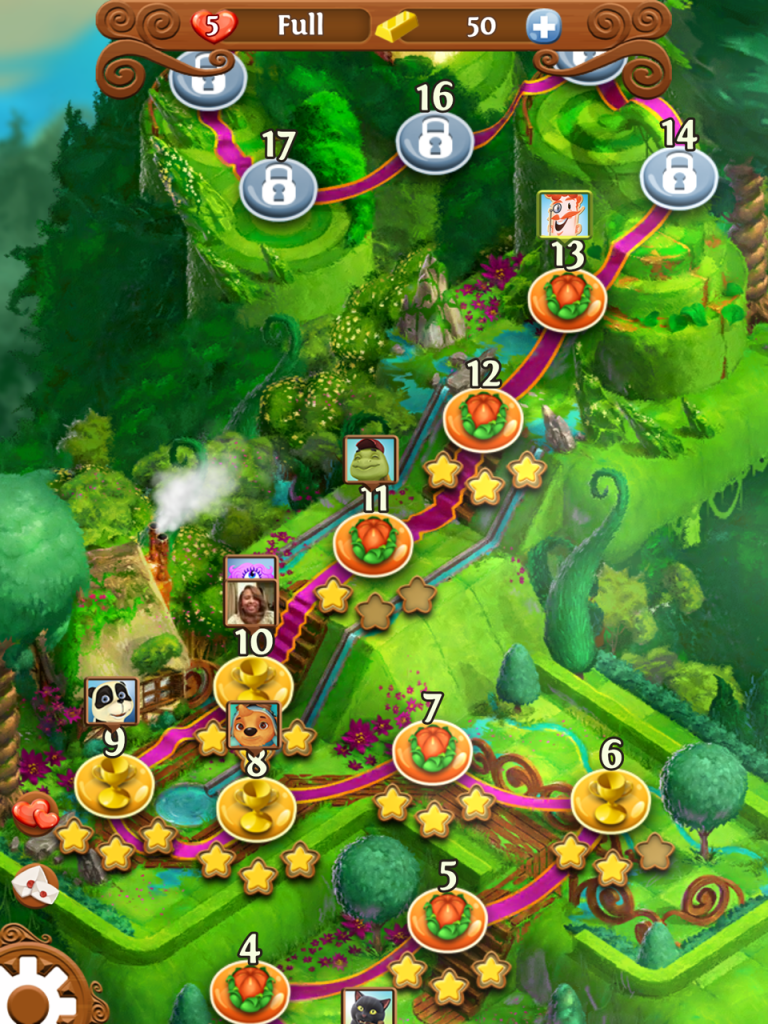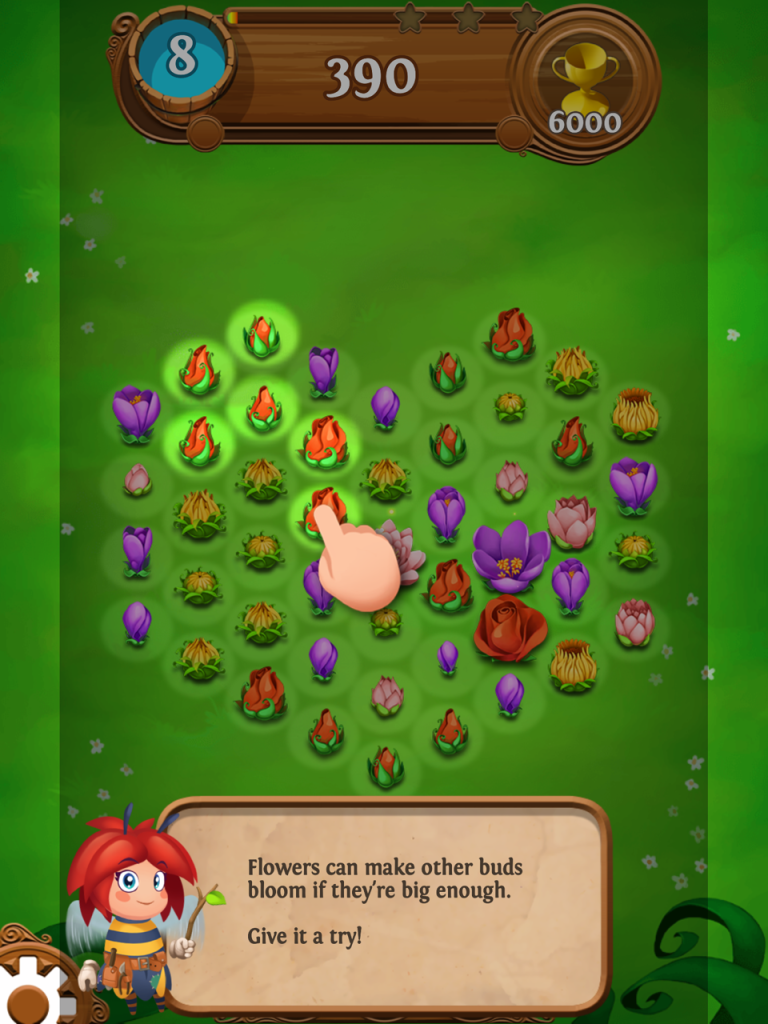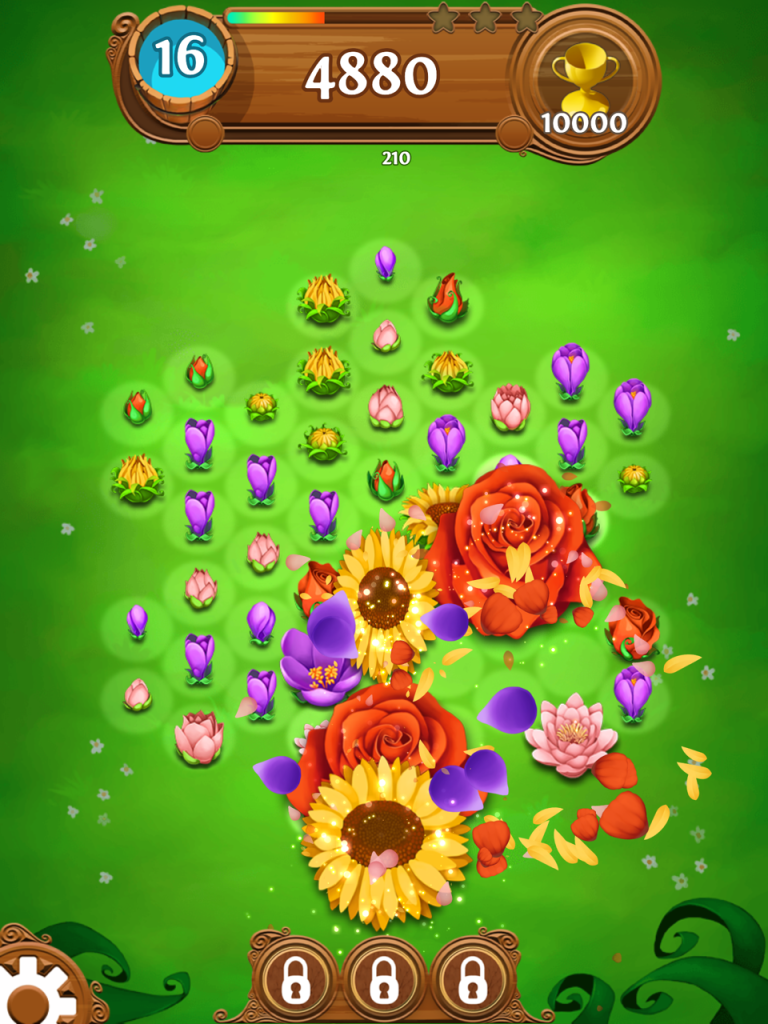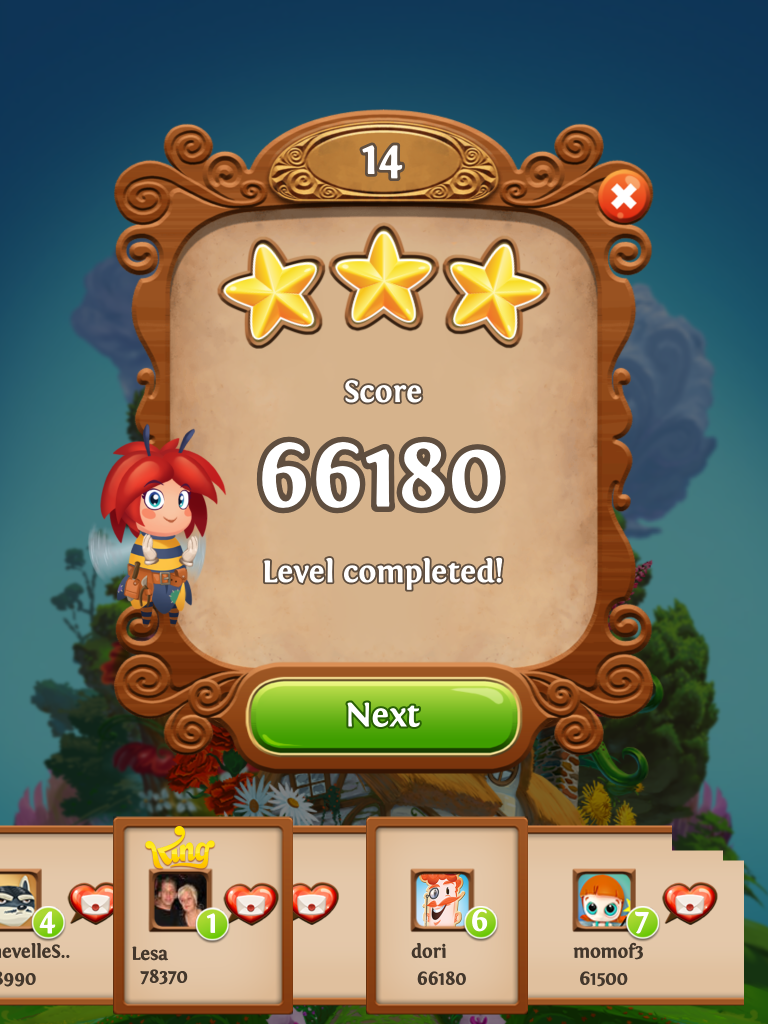What can we learn from the new game by the company who re-defined casual games?
Blossom Blast Saga (BBS), the new casual game by King, is one of the most polished casual games out there at the moment.
While definitely not a far cry from the company’s top-grossing game Candy Crush Saga, BBS has just enough innovation at the core game mechanic to set it apart from its predecessor.
Over the last month I’ve played BBS’s first 40 levels 3 times (and then some) to analyze the onboarding process and the social game loop, both of which are executed wonderfully in BBS.
Onboarding
The purpose of the onboarding process is to introduce new users to the product, teach them how to play and hopefully find compatibility with them so they’ll come back for another session.
If users do not understand how to play and the value of the game to them, they’ll probably never come back.
In BBS’s case, the onboarding process is a little bit tricky. Players download the game with a set of expectations of how to play a match 3 game, but BBS mechanics are slightly different.
Unlike most matching games, where the player swipes across lines of objects of the same color to make them disappear, in BBS the matched flowers are combined together, growing the last flower in the chain. When the sum of flowers exceeds a certain point, the last flower in the chain blossoms, causing the flowers in the tiles around it to grow as well.
This is not an easy concept to grasp, and during the first levels everything seems random. If players leave without understanding how their actions affect the actions on screen, the chances they’ll come back are slim.
Therefore, the main focus of the onboarding is to make sure the users understand what they are doing. And how do people learn best? By doing!
Learn by doing – not by reading.
One of the things I’m reluctant about during onboarding is an overwhelming amount of tooltips. This approach is not great for two reasons:
- Explaining every step of the way puts the player in a “following orders” mode. They don’t really understand what they are doing.
- When you tell someone how to do something, you deny her the pleasure of discovering it for herself.
In a good onboarding process there’s a moment, a magic moment, when the user suddenly understands something about the game. Many times it’s when they discover something on their own. Help your users to be smart; don’t tell them the answer right away!
BBS is doing a good job keeping the amount of tooltips relatively low, and many concepts are left for the players to figure out.
The actual learning takes place through behavioural learning, long first session time and level design that all enforce mastery.
The perfect behavioral machine.
Right after the first launch, the player finds herself in front of 20-something tiles with flowers.
She is instructed to swipe over a group of flowers. She swipes, and sees a little movement on the screen.
Another swipe: 2 flowers blossom.
Another swipe: 7 flowers blossom with a huge chain reaction.
Aha! I must have been doing something right!
At this point the player still doesn’t know what she’s doing. The only thing certain is that some actions are more effective than others. The beauty of BBS’s mechanics is that there are no wrong answers. If there are less than 3 flowers in a chain, the move will not be made. Therefore, all moves are good, and some are better than the others.
Eventually, enough repetitions and players will begin to understand what makes the big chain reactions go off and they will start to develop skills and strategies to beat the level. BBS just has to make sure players will repeat enough to get to that point.
The onboarding trap – forcing long sessions.
BBS’s ultimate goal during the onboarding process is to “lock” players inside the game, ensuring a significant first-time session. Notice these points:
- Performance is amazing. After the splash screen, users do not wait a single second for levels to load. This creates a flow experience that pushes the player to play more.
- Anything not related to progress is out. No “rate us” popup, login through FB or buy more gold bars. Nada. The only available button is always the “next level” button.
- The next level push. “Next level” popup appears immediately after the end of the previous level, pushing the player to play another level, then another, then another. They don’t stop offering, and the player doesn’t stop playing.
Level design enforces mastery.
Much of the teaching is made through the level design. Usually a concept would be introduced at a certain level and, 10 levels after, the player would have to prove that the concept is understood.
In Level 10, for example, the user is tested on whether the concept of blooming is clear. Users must acknowledge the flower progress bar that indicates if the flower will bloom when swiped. This progress bar is not explained in words and the players must figure it out for themselves. If they didn’t, they’d have hard time winning the level. However, once players discover the existence of this bar, the level becomes easy. It took me a few tries to get it, but when I did, this was my “aha” moment when I got hooked on BBS.
Another example comes further in the game. At level 40 the concept of the badger is introduced. The badger makes holes in the ground, destroying the beautiful flowers. It’s not that bad though, and levels can be beaten pretty easily with the badger as well. Until level 50.
This super hard level cannot be beaten unless the player chases the badger and destroys it completely. Only then the idea of how to play a “badger level” really sinks in, and the level is not that hard anymore.
Conclusion
The onboarding process is crucial for a free-to-play game, where the majority of players leave the game without ever going back. The amount of work going into the first 20 levels should be equal to the amount invested in the rest of the game.
While the BBS onboarding process is not perfect, it is doing many things right that we can learn from:
- Learn by doing
- Reduced amount of tooltips
- Emphasis on behavioral learning
- Focusing on progress (removing everything not related to it)
- Level design that enforces mastery
In the following post I’ll be analyzing BBS’s social game loop and the use of bots to encourage interaction. Sign up to my newsletter and get it right when I publish it!





One neat thing they are using in this game is shepar tone illusion which gives an audio illusion of the multiplier pitch going higher and higher when it actually isn’t.